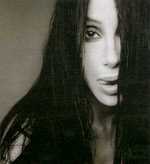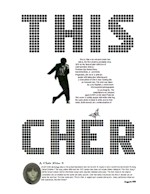
As I've been reading academic books on pop culture, I come across some interesting things like this most interesting essay, “The Rock and Roll Hall of Fame and Museum: Myth, Memory, and History by Robert Santelli from the book Stars Don't Stand Still, Music and Myth.
Now, I didn't know Santelli when I started reading the essay and I appreciated the first paragraph:
“Depending upon your point of view, the Cleveland-based Rock and roll Hall of Fame and Museum is either the music’s official house of history—the place where one can find proof of its artistic and cultural merit—or as triangular-shaped glass temple that has more to do with myth and mass consumption that the real story of rock ‘n’ roll.”
Santelli acknowledges the “vigorous discourse” about the two points of view. Note here that he calls the institution a Hall of Fame AND museum, and here surmises it might be a "house of history." More on that point later.
He continues,
"The skeptics’ fear that institutionalizing rock ‘n’ roll would kill the music’s present and future and trivialize and compress its past into neat, carefully packaged modules was not to be taken lightly….After all, rock, by its nature, has always been chaotic, incorrigible and anti-institutional.”
So I'm somewhere with these skeptics. A canon of taste-makers creating an in-circle is very antithetical to the idea of rebellion in art, but Santelli has a point that doesn’t stop folk and fine art museums from canonizing rebel painters, sculptors, writers, etc.
But then Santelli dismisses all the skeptics with one sentence: “No one explained, mind you, how rock’s integrity would be violated…No critic came forth with any anarchic alternative worth recalling.”
This dismissal is so vague, essentially saying 'no challenges were worthy' and the use of the phrase “mind you” sent up a warning flag to me that maybe this guy was affiliated in some way with the hall of fame.
Ah yes, we get to page two where he admits he was “a member of the curatorial team.”
He would be biased then. But I still wanted to give him a hearing. He spoke about the museum needing to be “free to make mistakes” and that they wanted to not be that guy who creates “a myth-plated story of the music and its most famous artists that is often shallow, vague, fractured, exclusionary, and nonrevisionist.”
Unfortunately, "exclusionary" and "nonrevisionist" are two words that come to my mind when I consider this museum.
So I wondered what happened? Well, the essay goes on to provide answers.
Early curators worried that
“without any standard historiographical references, there was no way to know for sure if we had gone too far, forging, for example, our own ideas on rock’s role as a countercultural force in the sixties, or assigning values to certain artifacts, or giving one artist too much credit and another too little[me: or none] in shaping the music. Even more importantly, how could we be certain that we separated myth from truth, when so much of what passes as standard pop music history is suspect?”
This is a place to start from, for sure. So what happened?
It turns out maybe the bias was in the homogeneity of the early team. And maybe this is a homogeneity that persists.
Santelli says, “Jim Henke, the museum’s newly appointed chief curator, assembled a team of music journalists to act as consultants, most of whom he had worked with or who had worked for him when he was music editor at Rolling Stone."
Wow. I was not prepared for that. So it might be fair to call this the Rolling Stone Magazine Hall of Fame. How shocking that one magazine would be so influential in the trajectory of a supposedly unbiased hall of fame institution. I mean, this magazine was never the only point of reference in the industry, right? Anyway, maybe unintentionally, but surely effectively, a Rolling Stone point of view prevailed to set standards and practices for inclusion and exclusion to the lists.
Santelli admits that “each of us owned entirely different interpretations of events, artists, and albums, despite the fact that we were all approximately the same age—late-thirties to early forties—…had been at many of the same major concerts, knew intimately the so-called classic-rock works…”
Ok. That’s not good either.
He goes on to say that “Rock ‘n’ roll, like America itself, is a multicultural, multidimensional maze. The museum, it was agreed, ought to reflect this.”
It’s fascinating to me that this group of people, all from essentially the same social group, is surprised by their own diversity but clueless as to the limits of that diversity. Rock criticism is male-dominated and it's no wonder the roster is as homogeneous as it is.
He takes pride in the non-chronology of the flow of the museum, where an exhibit of The Allman Brothers Band could be situated next to one for Alice Cooper…
“the Allman Brothers Band demonstrated its importance as a musical unit minus theatrical histrionics, like those that made Alice Cooper’s show so exciting in the early seventies; yet an Alice Cooper exhibit, complete with stage props and costumes, was positioned just a few feet away, as if the two were somehow thematically linked. Such a chaotic, “unruly” approach to rock history was spectacularly effective in breaking apart myth and convention and challenged the visitor to rethink his view of rock history—perhaps the museum’s most important accomplishment to this point.”
 Aside from all the self-congratulations right there, it’s maddening to imagine this, if you will, an exhibit of Gregg Allman (minus those "theatrical histrionics") [oh my blood pressure] situated right next to a CHER exibit (“complete with stage props and costumes”) positioned just mere feet way as if, not somehow but f*#king actually, those two acts were physically linked in some way, like say a concert they did together in 1978 or Allman’s appearance on Cher's TV show in 1975. I’m not talking about a relationship here. I’m talking about products and performances. If Alice Cooper and Gregg Allman were linked romantically, that’s beyond the scope of the Hall of Fame surely. But actual rock shows, record albums and TV segments…
Aside from all the self-congratulations right there, it’s maddening to imagine this, if you will, an exhibit of Gregg Allman (minus those "theatrical histrionics") [oh my blood pressure] situated right next to a CHER exibit (“complete with stage props and costumes”) positioned just mere feet way as if, not somehow but f*#king actually, those two acts were physically linked in some way, like say a concert they did together in 1978 or Allman’s appearance on Cher's TV show in 1975. I’m not talking about a relationship here. I’m talking about products and performances. If Alice Cooper and Gregg Allman were linked romantically, that’s beyond the scope of the Hall of Fame surely. But actual rock shows, record albums and TV segments…
Imagine that!
Oh…my…God. The same reasons they use to glorify Alice Cooper (creative theatrics and costumes) are used against more feminine acts like Cher or Madonna or ad nauseam. I’ve also read quite a lot of rock history in the past 6 months and everybody seems to agree that an Alice Cooper show was mostly image and artifice and show biz. I actually think he would agree with that assessment.
Related: this week I saw a great documentary about the cross-influences of Lou Reed, Iggy Pop and David Bowie called Bowie, Iggy & Lou 1971-1973: The Sacred Triangle. Bowie’s  Ziggy Stardust creation is described by one commentator as pure image. The commentator said the music could as well have been Elton John songs. [They love to dismiss Elton John too]. The music didn’t matter. The show was about the image-making.
Ziggy Stardust creation is described by one commentator as pure image. The commentator said the music could as well have been Elton John songs. [They love to dismiss Elton John too]. The music didn’t matter. The show was about the image-making.
Ignoring the contributions of women artists in image-making is selective history.
First of all, a Hall of Fame is by definition an establishment institution, asserting itself as THE authority figure. When you become the authority you set yourself as an opposing force to rebellion. This is why establishments respond to challenges to its authority. Practitioners of any rebellion will necessarily happen outside of the establishment. Which is an irony of any art canon. It abdicates its identity as rebellious and should be aware of its own new bias.
Of course I’m not the first person to kvetch about these hypocrisies in canon-making and the double standards for men and women inductees. The best example I’ve read to date is “Across the Great Divide: Rock Critics, Rock Women” by Barbara O’Dair (also in Stars Don't Stand Still, Music and Myth), who points out how most rock and blues histories have eliminated the stories of women artists. She also describes the push-back received in attempts to correct this from rock music institutions, like Rolling Stone. A quote from her essay:
“But while male fans and critics may say it’s okay for Mick Jagger to wear eyeliner or Kurt Cobain a dress, identifying with actual female rockers appears to be a much  greater leap for most men to take. It’s interesting to note, for instance, that the male fans Joni Mitchell and Madonna boast seem to be disproportionately gay.”
greater leap for most men to take. It’s interesting to note, for instance, that the male fans Joni Mitchell and Madonna boast seem to be disproportionately gay.”
My feeling is it takes balls to buck gender conventions. So those who do it, do it. Those who can’t, don’t.
On the way to my Aunt's funeral last weekend, Mr. Cher Scholar, a student of the NMU museum studies program, was asked by me to explain the differences between a Hall of Fame and a museum and it seems the curatorial aim of each would be entirely different.
A museum tells the history (by both big and small players) and a Hall of Fame simply celebrates the most successful, which is not a history. It would seem an insurmountable challenge to curate for both things at the same time. But I guess that's the least of it.
 Vincent Prince on the Sonny & Cher Comedy Hour
Vincent Prince on the Sonny & Cher Comedy Hour



































